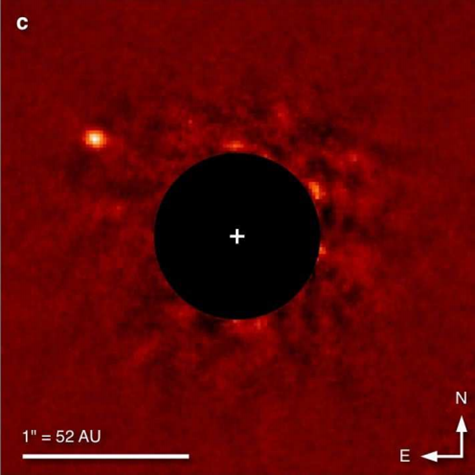
Kappa Andromedae b (or ‘Kappa And b,’ for short) is 170 light-years away and orbits its sun, which is a mere 30 million years old (compared to Earth’s 5 billion year old sun), about 1.8 times farther than Neptune’s orbit. It glows red due to radiation from the heat that’s left over from its formation. Its mass is so huge, scientists are not sure how to classify it. Is it a sun, a planet, or more likely, something in between – a “failed star” that’s not big enough to sustain nuclear fusion in its core? For lack of a better name, scientists are calling it a “Super Jupiter”.
NASA’s Michael McElwain explained in a news release:
“According to conventional models of planetary formation, Kappa And b falls just shy of being able to generate energy by fusion, at which point it would be considered a brown dwarf rather than a planet. But this isn’t definitive, and other considerations could nudge the object across the line into brown dwarf territory.”
The scientists made the discovery using the High Contrast Instrument for the Subaru Next Generation Adaptive Optics (HiCIAO) and the Infrared Camera and Spectrograph (IRCS) mounted on the Japanese Subaru Telescope atop Mauna Kea, Hawaii.
You can read the full study here.








